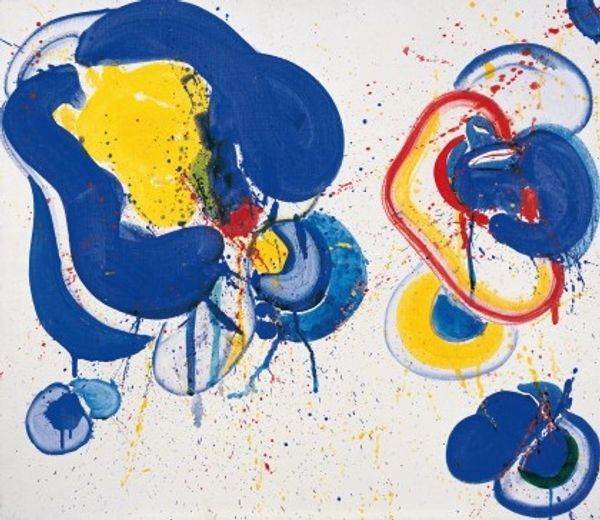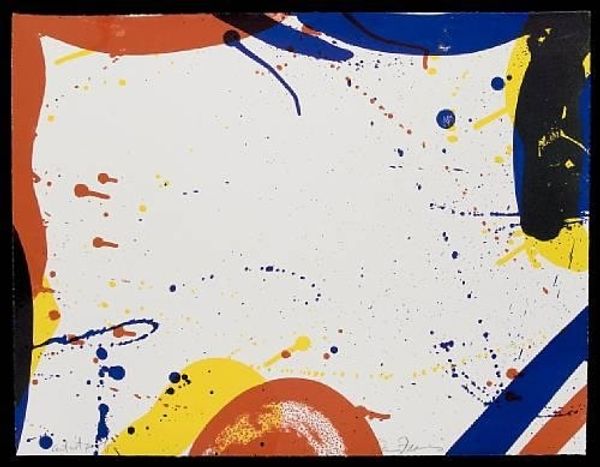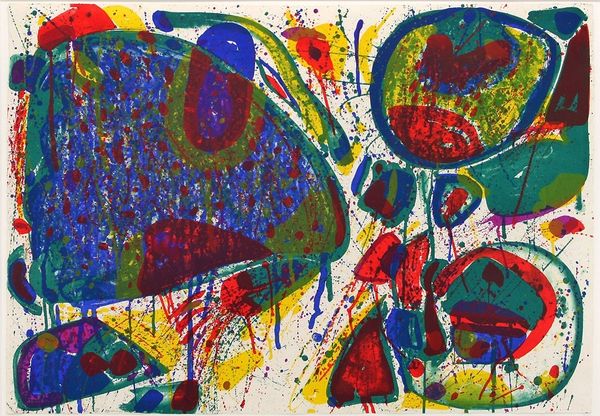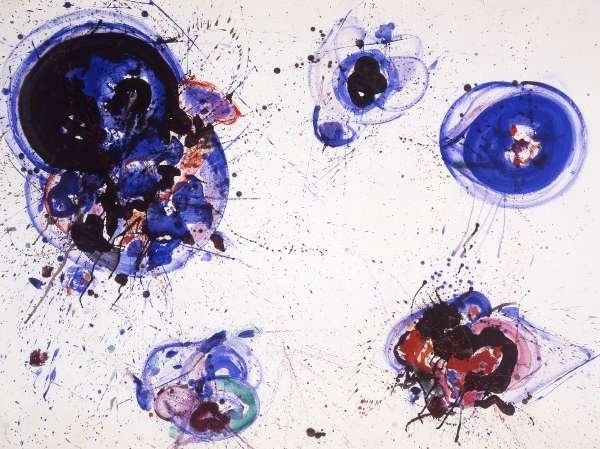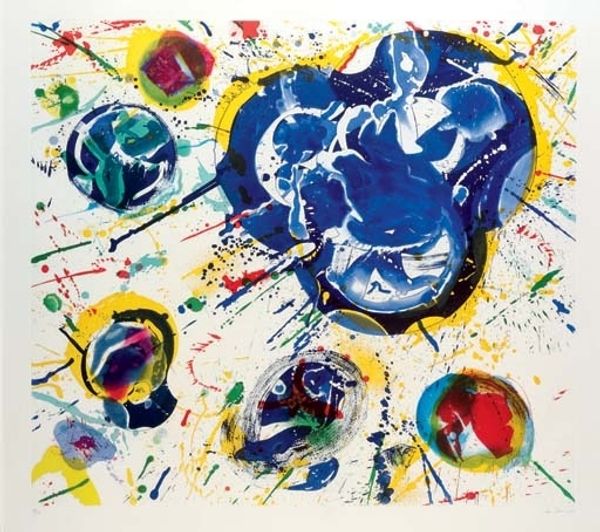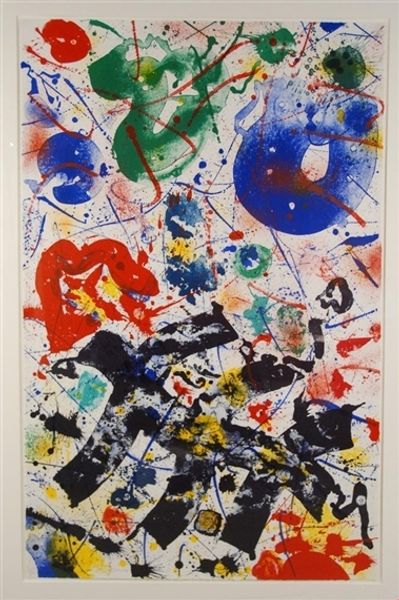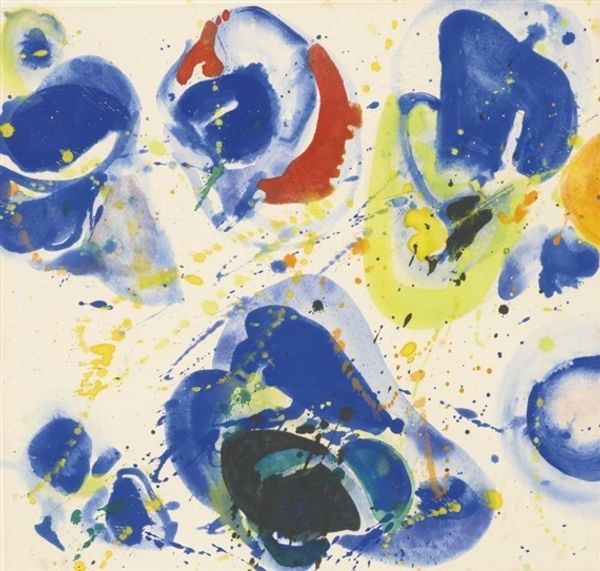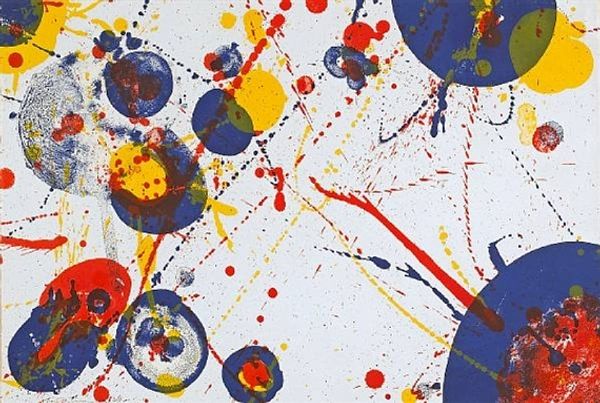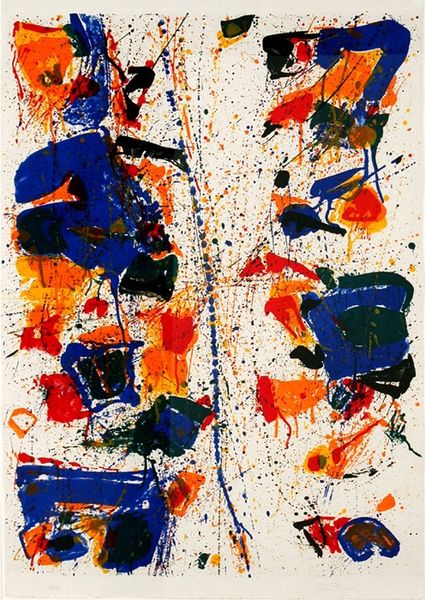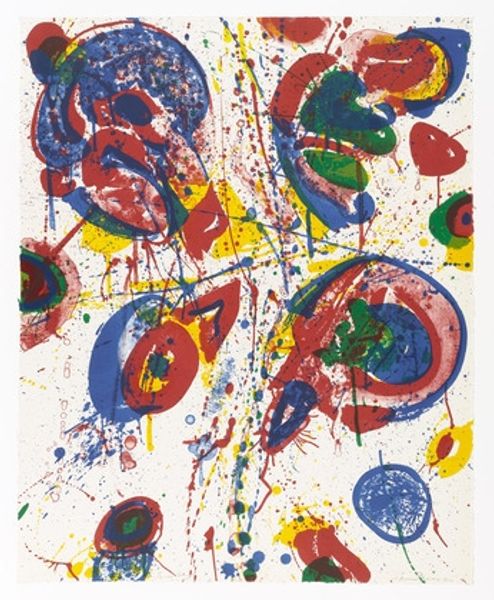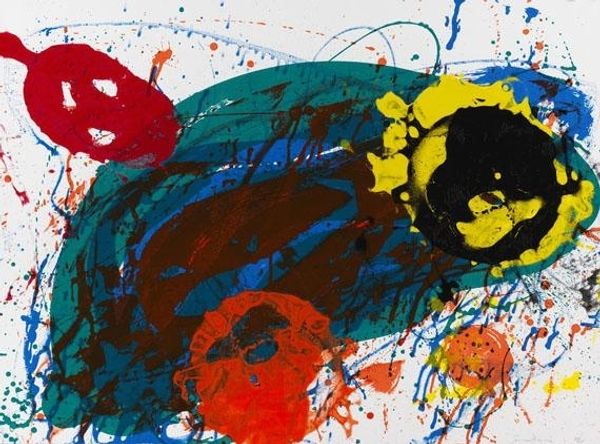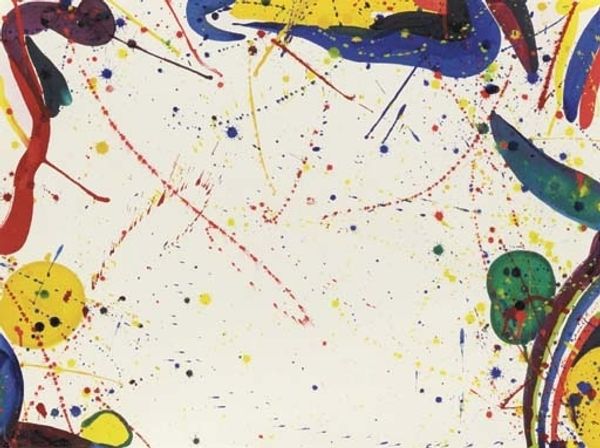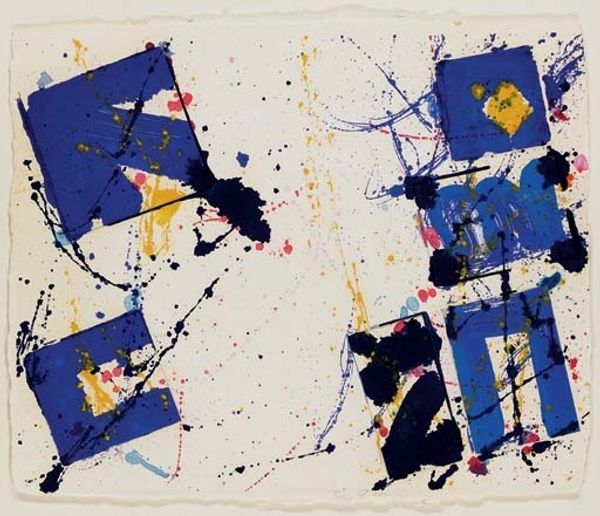
stain, acrylic-paint
#
abstract-expressionism
#
abstract painting
#
stain
#
acrylic-paint
#
form
#
acrylic on canvas
#
abstraction
#
modernism
Copyright: 2012 Sam Francis Foundation, California / Artists Rights Society (ARS), NY
Curator: What strikes you first about Sam Francis's 1961 acrylic on canvas, “Hurrah for the Red, White, and Blue"? Editor: An overwhelming sense of playfulness, almost bordering on chaotic joy. The bursts of color splattered across the canvas, it feels like a celebration. Yet, that title... considering the historical context of 1961, the height of the Cold War... it’s hard not to see something more complicated here. Curator: Precisely. While the spontaneous quality hints at Abstract Expressionism’s embrace of the subconscious and the pure act of painting, these aren’t random splotches. There’s a careful distribution of color masses—blue dominating, framing bursts of red and yellow. Notice how these forms avoid the canvas’s center, allowing the white ground to breathe, creating a visual push and pull. To me, this represents the ongoing negotiation of what American identity stood for at that time. Editor: A negotiation often marred by internal conflicts. The brashness of the colors could be interpreted as patriotic fervor, but the fragmented composition might equally suggest a nation struggling to reconcile its ideals with its realities—the ever-widening gap between propaganda and practice. What did it actually mean to hail that flag, given what was unfolding at home and abroad? Curator: Exactly! And think about how Francis uses the stain technique, letting the acrylic soak directly into the canvas. This creates a sense of immediacy, almost like a fleeting moment captured. It resists any fixed representation, any clear message—evoking a feeling rather than illustrating an idea. Do you notice how this also mirrors a sentiment prevalent during the Cold War era where the nation's identity and ideological values became intensely contested terrain. The splatters echo the widespread social and political upheaval, hinting at cultural fragmentation and societal anxiety. Editor: Absolutely. The unrestrained application contrasts with a carefully conceived structure. The colors become symbolic of conflict and dissonance within. The overall effect, at least for me, is that Francis is critiquing American exceptionalism. Curator: A beautiful reading. Considering the history—a nation at odds with itself during social upheaval—that critique might be timeless. Editor: Absolutely. The painting offers a pertinent perspective on the historical and societal shifts of the 60's and their reflection on the canvas.
Comments
No comments
Be the first to comment and join the conversation on the ultimate creative platform.
